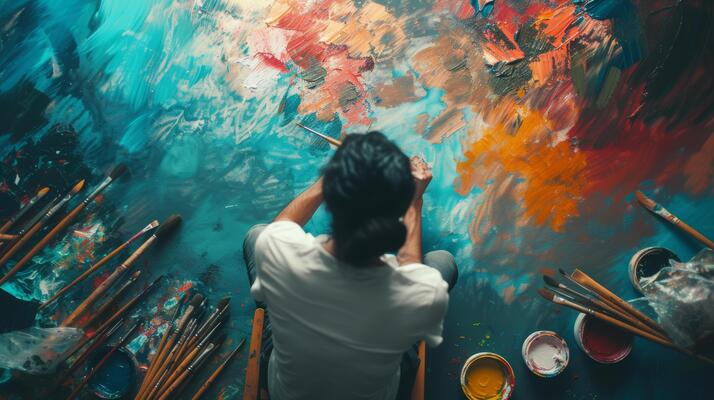Using multiple photos in one painting for captivating compositions
In the world of art, where creativity knows no bounds, **using multiple photos in one painting** has emerged as a transformative technique that has captivated the hearts and minds of professional photographers worldwide. This intriguing approach, blending photographic realism with artistic interpretation, offers a delightful fusion that invites viewers to explore more profoundly. This article delves into the art and science behind this innovative method, providing you with insights to captivate your audience.

The Origin of Layering Photos
The concept of integrating multiple images into a single painting isn't entirely new. Historically, artists have experimented with collage techniques, weaving various visual elements together to create a cohesive story. However, with the advent of digital technology, this art form has been revolutionized, allowing stunning precision and creativity. The essence lies in extracting the emotions from different photographs and melding them into a harmonious visual symphony. Contemporary artists and photographers are now pushing these boundaries further, creating what is sometimes referred to as digital photo-based paintings. Learn how these innovations have revolutionized art at digital photo painting explained.
Techniques for Combining Multiple Photos
For professional photographers venturing into this domain, the secret lies in mastering certain techniques to ensure the seamless blending of images into a singular masterpiece. One notable approach includes using various exposure settings within photographs to bring out unique textures and contrasts. This method, when applied skillfully, can result in breathtaking compositions. Another technique involves integrating different moments from the same scene. You can transform a simple portrait into an emotional narrative by weaving together multiple expressions or poses captured over time. Beyond traditional possibilities, delve into photo-based painting for additional inspiration.
Photo-to-Painting Techniques: The Digital Revolution
Digital tools like Adobe Photoshop and Corel Painter have opened up a realm of possibilities for creating paintings from multiple photos. These software applications allow photographers to experiment with layer blending, adjust opacity, and employ filter effects that simulate traditional painting techniques. It's not merely about superimposing images but about reinterpreting them with a painter's touch. If you are intrigued, explore how the photo-to-painting process works.
Creating Emotionally Rich Artworks
The true magic in using multiple photos within a painting lies in its ability to evoke emotion. By thoughtfully selecting imagery that resonates with viewers on a deeper level, photographers can tell complex stories. Think of it as a visual puzzle where each piece adds depth and dimension. This technique can empower photographers to transcend typical boundaries, crafting not just images but profound experiences. The Cleveland Art Museum's online exhibit on photo-based images highlights the versatility of this approach.
Challenges and Considerations for Professionals
While the opportunities are vast, there are also challenges to consider. Ensuring all elements in the composite work together harmoniously can be daunting. Color balance, perspective alignment, and resolution consistency are key factors. A keen eye and attention to detail are crucial when combining various elements into a harmonious visual narrative. Additionally, obtaining proper permissions for image use and considering copyright issues is imperative for professionals stepping into this arena. For more tailored advice, see our guide on how photo-based paintings are made.

Conclusion: Stepping into a New Creative Realm
Incorporating multiple photos into one painting is more than just an artistic venture; it's a meaningful journey toward exploring new dimensions of creativity. Whether you're selective with images to convey a certain mood or opt for striking contrasts to make bold statements, mastering this technique can elevate your portfolio and enrich your artistic expression. Whether you're a seasoned photographer or an enthusiastic newcomer, there's always more to learn about the digital painting revolution. The horizon seems endless, filled with promise and inspiration at every turn.
FAQs
How do you select which photos to use in a painting?
Selection depends on the theme or story you wish to convey. Focus on images that evoke emotions and complement each other in terms of color and composition.
What software is best for creating photo-based paintings?
Popular tools include Adobe Photoshop and Corel Painter, known for their extensive features and adaptability.
Can these techniques apply to traditional paintings?
Yes, traditional painters can use photo references to guide their compositions, adding a contemporary twist to their art form.

